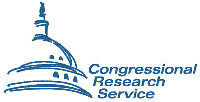United States Congress

Congressional Research Service Reports
Date of this Version
2007
Abstract
Ethanol plays a key role in policy discussions about energy, agriculture, taxes, and the environment. In the United States it is mostly made from corn; in other countries it is often made from cane sugar. Fuel ethanol is generally blended in gasoline to reduce emissions, increase octane, and extend gasoline stocks. Recent high oil and gasoline prices have led to increased interest in alternatives to petroleum fuels for transportation. Further, concerns over climate change have raised interest in developing fuels with lower fuel-cycle greenhouse-gas emissions.
Supporters of ethanol argue that its use can lead to lower emissions of toxic and ozone-forming pollutants, and greenhouse gases, especially if higher-level blends are used. They further argue that ethanol use displaces petroleum imports, thus promoting energy security. Ethanol’s detractors argue that various federal and state policies supporting ethanol distort the market and amount to corporate welfare for corn growers and ethanol producers. Further, they argue that the energy and chemical inputs needed to turn corn into ethanol actually increase emissions and energy consumption, although most recent studies have found modest energy and emissions benefits from ethanol use relative to gasoline.
The market for fuel ethanol is heavily dependent on federal incentives and regulations. Ethanol production is encouraged by a federal tax credit of 51 cents per gallon. This incentive allows ethanol — which has historically been more expensive than conventional gasoline — to compete with gasoline and other blending components. In addition to the above tax credit, small ethanol producers qualify for an additional production credit. It has been argued that the fuel ethanol industry could scarcely survive without these incentives.
In addition to the above tax incentives, the Energy Policy Act of 2005 (P.L. 109- 58) established a renewable fuels standard (RFS). This standard requires the use of 4.0 billion gallons of renewable fuels in 2006, increasing each year to 7.5 billion gallons in 2012. Most of this requirement will likely be met with ethanol. In the United States, approximately 3.9 billion gallons of ethanol were consumed in 2005. Thus, the RFS will likely lead to a doubling of the U.S. ethanol market between 2005 and 2012. Some analysts believe that this program could have serious effects on gasoline suppliers, leading to somewhat higher fuel prices. Thus, the Environmental Protection Agency’s implementation of the program will likely be of continuing concern to Congress.
Other issues of Congressional interest include support for purer blends of ethanol as an alternative to gasoline (as opposed to a gasoline blending component), promotion of ethanol vehicles and infrastructure, and imports of ethanol from foreign countries. This report supersedes CRS Report RL30369, Fuel Ethanol: Background and Public Policy Issues (available from author).


Comments
Published by Congressional Research Service, www.crs.gov, RL33290